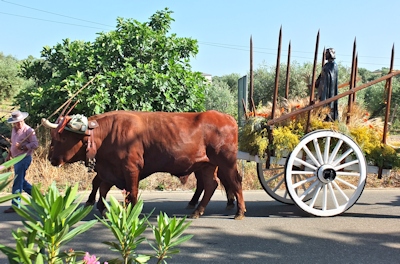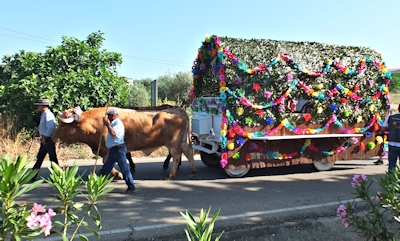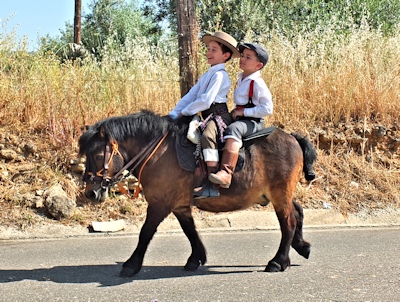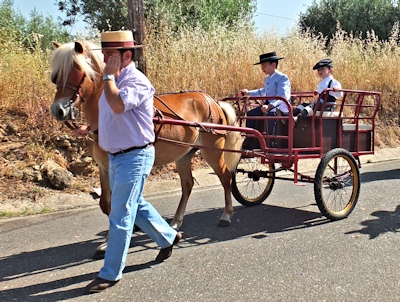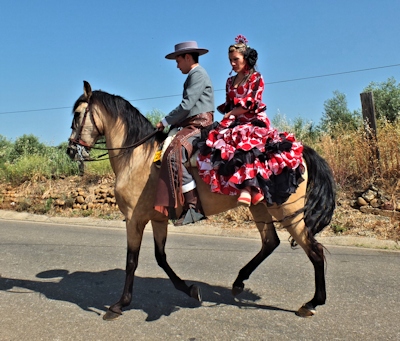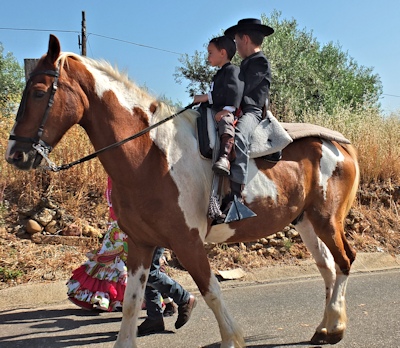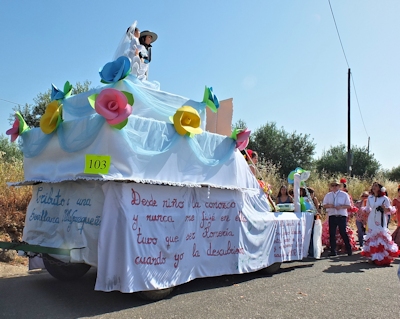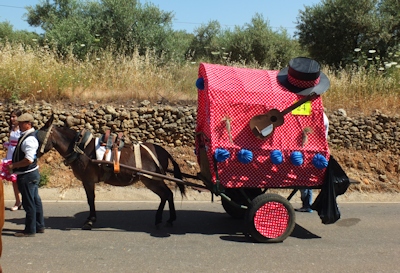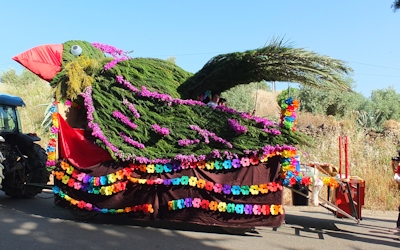We arrived at Villafranca de
Córdoba and found
the ACSI CC listed campsite on the edge of the town so stayed for a
couple of nights. Taking a short stroll into the town centre in the
evening we found it busy with preparations in the main
plaza and
people gathering by the church, many women and girls wearing
traditional flamenco dresses. After a couple of fireworks there
was a procession through the streets with women carrying a
large
statue
of San Isidro Labrador, the patron saint of farm labourers. Once they
arrived at the arena the celebrations
began with a "flamenco rock disco" band to entertain and the cooking of
15,000 fried eggs in large pans. We joined the long queue and
eventually got our eggs with a bread roll
at about 11 o'clock. The band kept playing and people danced although
most tunes sounded the same and oddly no one clapped at the end of each
song. I think we were the only English tourists there!
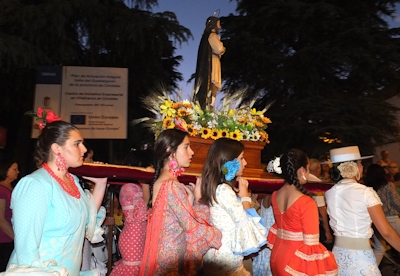
San Isidro procession
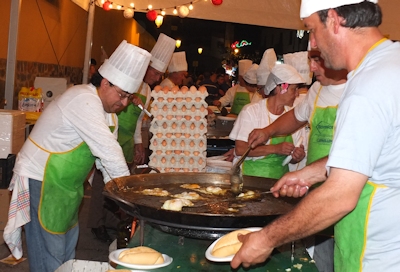
15,000 fried eggs!
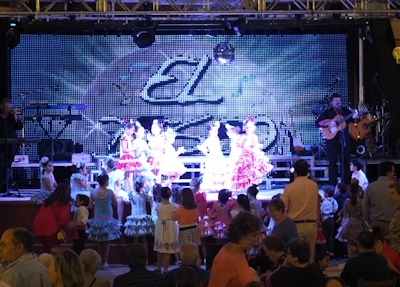
Flamenco rock band
The
next morning luckily was fine as people gathered at 10 o'clock for the
Romería de San Isidro Labrador, a pilgrimage procession to a local
ermita then a few kilometres further to a farm. Now the statue
was
carried on a decorated wagon drawn by two massive oxen and followed by
many more wagons and floats with most people including the children in
traditional dress, either walking or on magnificent horses with the
ladies riding side-saddle and young children being carried. Although
the pilgrimage had a religious theme the wagons were loaded with food
and drink for a picnic. We found out they would return in the
early evening so positioned ourselves on the roadside to watch as they
returned, some the worse for drink but still cheerful.
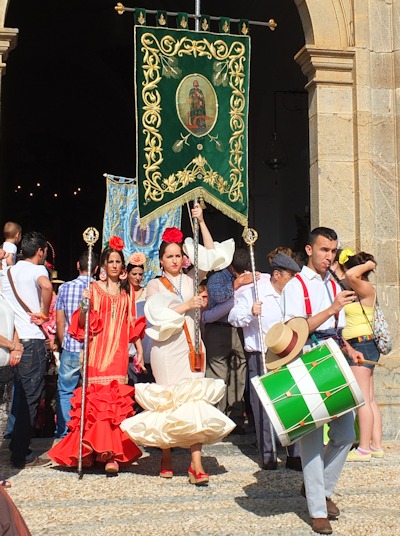
leading the procession
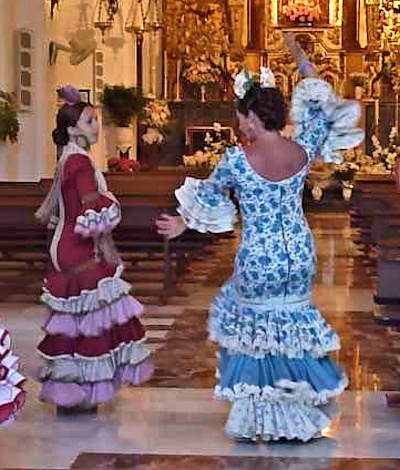
flamenco dancers
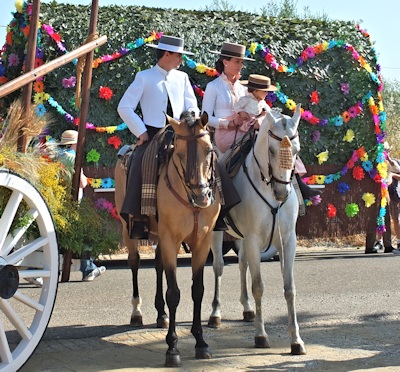
a family day out

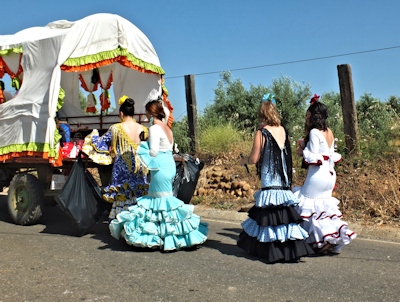
a long walk
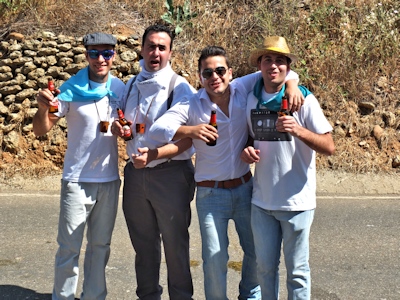
they had a good day!
After the colourful events
of the last couple of days we spent the evening sorting through the
many photos and studied the maps and guides to decide where to go next.
The next morning was warm and sunny as we drove through a couple of larger
and busy towns of Castro del Rio and Baena, a centre for olive
oil production and turned off across olive covered hills to the old
puerto blanco of Zuheros set beneath high cliffs.









